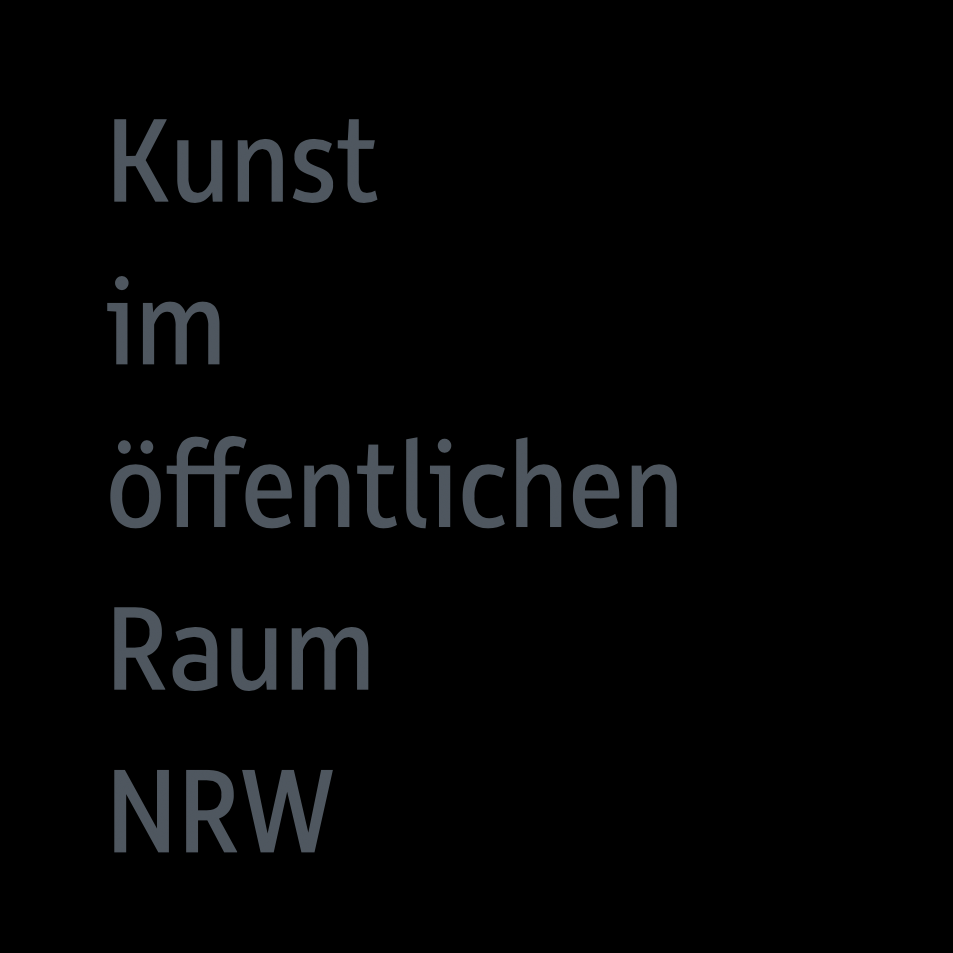Stadteingangszeichen / City Entrance Marker

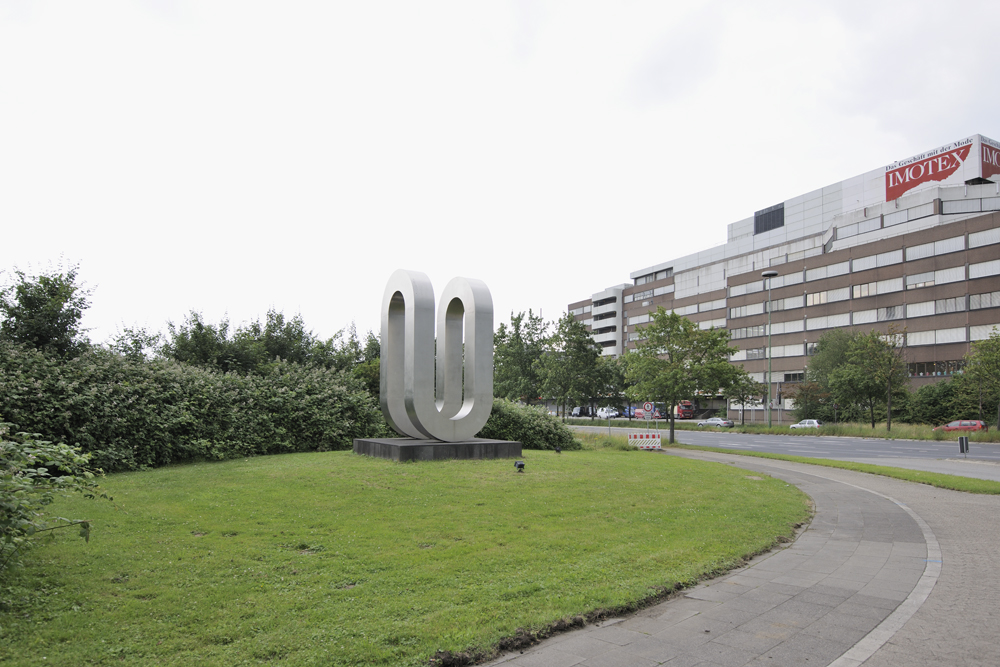
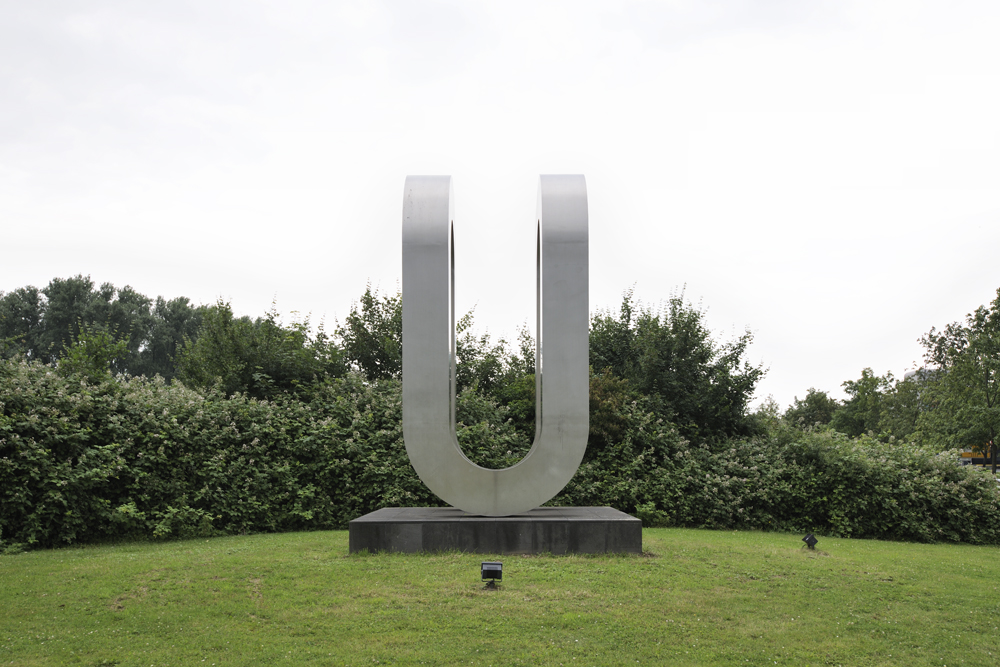
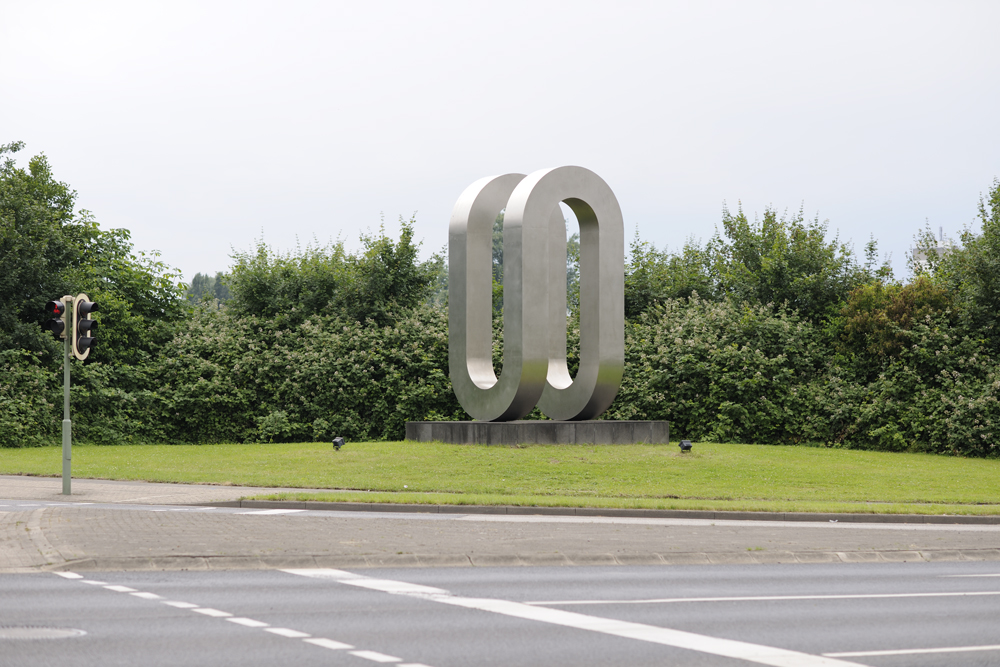
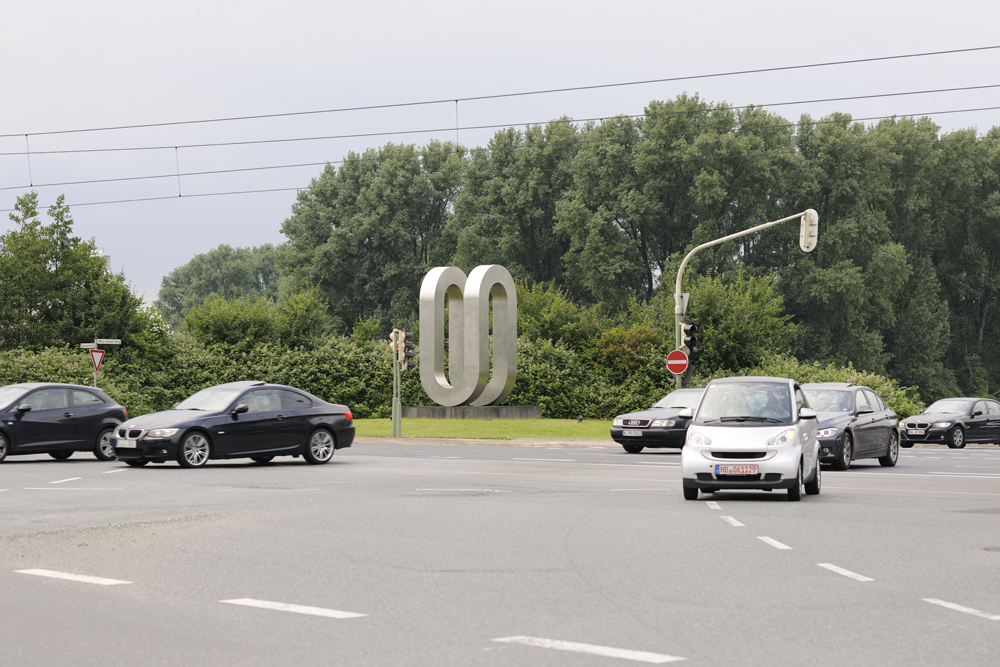
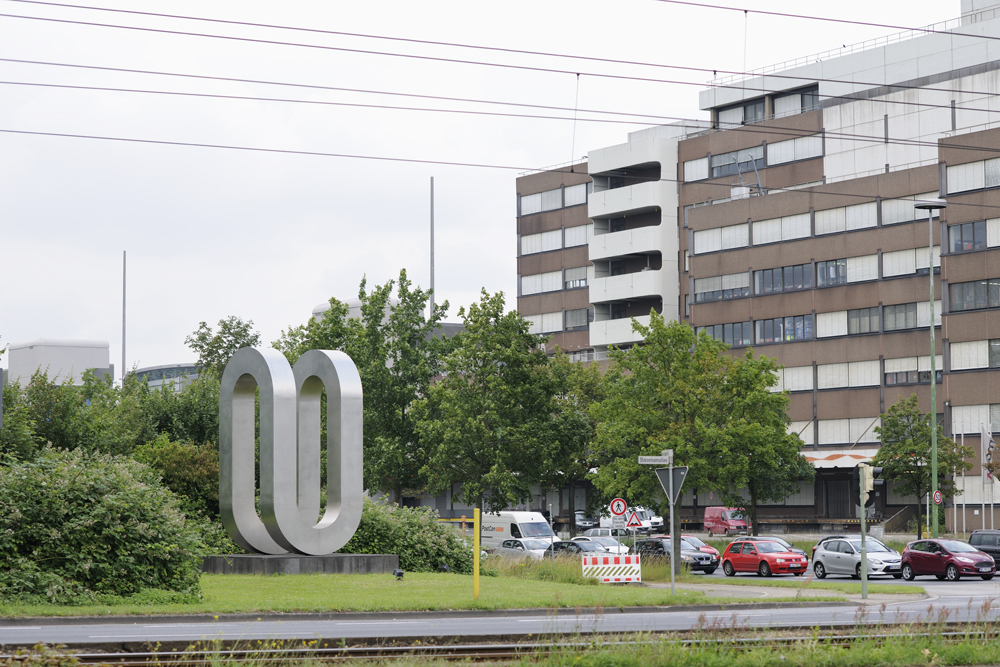
The signaling effect of this six-meter-high stainless steel sculpture is impossible to miss. The City Entrance Marker or Endless Loop was originally intended for the Taubental industrial park. Instead, after extensive discussion between the artist, the city, and the company Management Parc from Düsseldorf, the city accepted the sculpture as a gift in 1996. In July 1997, it was handed over to the public in its current location.
It rightly bears the name Endless Loop, as the steel arches seem to be in continuous motion. At the same time, the sculpture looks like a static, abstract, and monumental symbol of permanence.
Aside from the natural light reflecting on the surface of the steel, the work establishes no relationship with its surroundings. Bearing no physical resemblance to natural phenomena, the sculpture appears to be an art object with nothing to decipher.
Instead, the Endless Loop – like many other objects by Josef Neuhaus – is the product of rationally calculated formal considerations. Form and idea are closed off to all external influence. As such, the work is self-contained and asserts itself on its surroundings as an autonomous work of art.
In title and form, this Endless Loop was inspired by the work of Swiss artist, designer, and architect Max Bill (1908–1994). More specifically, it draws from his Endless Ribbons – a group of works that Bill began developing around 1935, which focus on the principle of the möbius strip: as an infinite loop, it is a single surface with only one side and only one boundary.
The term “concrete art,” which Josef Neuhaus used, was also further defined by Max Bill in his introduction to the catalog for the exhibition Zürcher konkrete Kunst: “The goal of concrete art is to develop objects for intellectual use, the same way people make objects for material use … concrete art is ultimately the pure expression of harmonious measure and law. It organizes systems and gives life to this order through artistic means.”
As such, concrete art distinguishes itself from constructivism and abstract art through its scientific thinking, which is manifest in the exploration of geometric laws. Max Bill saw the principles of concrete art implemented particularly clearly and creatively in Josef Neuhaus’s work, which eventually gave rise to his poem “For Josef Neuhaus”:
they are solid
they are cool
they are sharp
they are white
could they be colorful
could they be black
could they be small
could they be soft
visible is the cover
visible is the emptiness
visible is the in between
visible is the mass
tangible is the boundary
tangible is the condition
tangible is the body
tangible is the emptiness
the emptiness is the slits
the emptiness is the sight
the emptiness is inside
the emptiness is all around
the emptiness is the access to the secret
that the massiveness contains the unknown
the external relationship is visible
the interior is filled with perception
that is how the magic blocks and bars are made
into vessels
into pupations
of thoughts that grow inside and
outside waft away
Source: Skulpturen in Neuss – Author: Dr. Christian Frommert
Josef Neuhaus
← Zur Startseite
Neuss, near the south bridge, Stresemannallee
